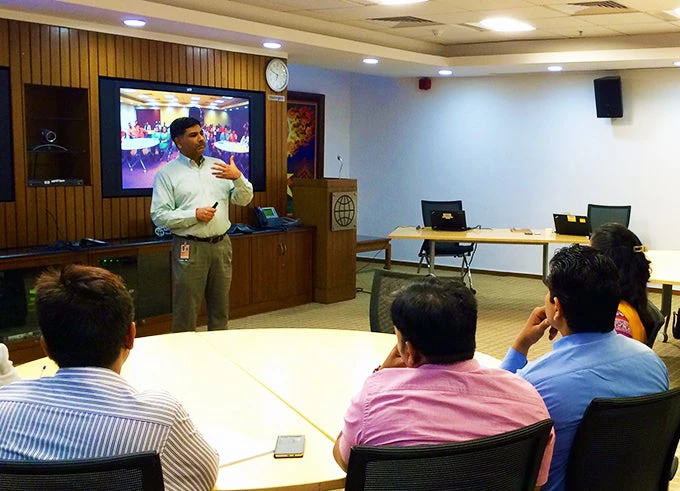
You don’t have to be a number-cruncher to enjoy this challenge:
1, 5, 200, and 2,800,000,000. Close your eyes after reading these numbers. Can you recite them in the right order?
Intrigued? If you’re interested in the development of South Asia, these four numbers will resonate with you. They represent four areas of opportunity for the region to further integrate and thrive economically.
Last month, prior to the South Asia Economic Conclave #SAEC15, Sanjay met with 30 Indian graduate students holding or currently pursuing advanced degrees in history, economics, and South Asia studies. He shared the 4 numbers with them and observed their responses. Here’s an overview of the conversation:
1%
Only 1 percent of Nepal’s hydropower has been realized. (Keep in mind the rampant power deficit in South Asia!)“South Asian countries’ trade levels within the region and with outside countries are both much lower than their potential. To promote trade, regardless of within South Asia or not, we need to strengthen our infrastructure and institution. That’ll make doing business easier.” Prerna Prabhakar, from the University of Delhi's Department of Business Economics
5%
Intra-regional trade between South Asian countries only account for 5% of their GDP, versus 25% of that of ASEAN countries.“India – the big brother - has to take some blame, otherwise the goal of regional integration won’t be realized." Abhishek Anand, PhD, from Jawaharlal Nehru University

200
Northeast India is landlocked and only connected with the rest of India via the Siliguri Corridor, or Chicken's Neck, a narrow stretch of land that spans 1,600 kilometers. If Bangladesh, lying on one side of the corridor, creates a passage for goods originating from Northeast India, the route will shorten to a mere 200km.“India is very careless on the Chicken’s Neck. There’re lots of problems like smuggling and refugees. When we talk about integration, we need to solve our own problems first to show that we are serious about integrating our own part as well as with our neighbors.” Bijay Thapa, PhD, from Jawaharlal Nehru University

Credit: World Bank
2.8 Billion
Trade between India and Pakistan has the potential to expand 10-27 times from the current level of $2.8 billion.“Trade lost due to conflicts is humongous. Though Pakistan has huge quota in South Asian University, but the number is smallest from Pakistan.” Surbhi Kesa, PhD in economics, from South Asian University
So let me recap these numbers one last time:
A mere 1% of Nepal’s vast hydro energy potential is being tapped into; intra-regional trade is bottoming at 5% of South Asian countries’ GDP; only 200 kilometers are needed to spur India-Bangladesh trade; and the level of trade between India and Pakistan is stuck at a meagre $2.8 billion.
Do you find it much easier to remember 1, 5, 200, and 2,800,000,000 now?
Let’s not miss out on these four opportunities. They represent the potential of South Asia’s young and hopeful!



Join the Conversation